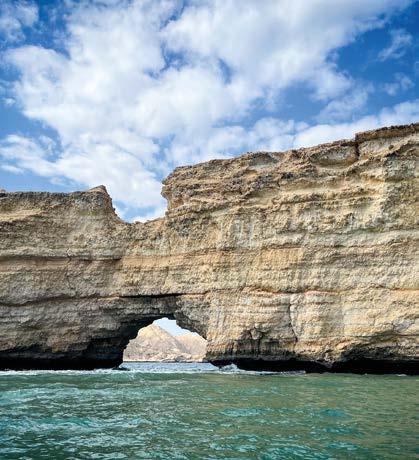
16 minute read
Senior Stallions
FINAL CHAMPIONSHIP
D YASAL
Advertisement
FA EL RASHEEM X HUDHA
BREEDER: DUBAI ARABIAN HORSE STUD
OWNER: ALI RASHED MATAR AL NEYADI
Rabdan R
FA EL RASHEEM X SG ROWADAH
BREEDER: MOHAMED HAITHAM MOHAMED BINFRAISH ALKINDI
OWNER: MOHAMED HAITHAM MOHAMED BINFRAISH ALKINDI
Js Oscar
AJ MARZAN X D CRYSTAL MOON
BREEDER: AL JUWAHER ARABIAN HORSE STUD
OWNER: AL NOOR ARABIAN HORSE STUD
An Interview by Sonia Smaldone
A seasoned and “oh-so-knowledgeable” figure in the Arabian Horse international community, Polish Dr Marek Trela has achieved extraordinary fulfilment over the past several decades. His career inside the industry and institutional bodies administering the world community of breeders is terrific. I have never heard anything more passionate about Arabian horses than what he has done for them. In its ending part, the interview may convey the feeling of a noble knight’s soul going to rest home after completing his mission. But, Dr Trela has joined a new call of duty in Jordan. After more than 35 years of commitment to the glorious cause of the Arabian horse that will always hold a special place in his heart, he has decided to change direction and care for animals tragically affected by fate. “It’s now time to give, not take”, he argues…
When was your first contact with Arabian Horses?
For the first time I met Arabian horses as a young boy at the racetrack in Sopot, during my summer vacations. My parents were enjoying the pleasures of being on the beach, but I was sneaking to the racetrack to see races. It was a time of traditional summer racing season and most of the races were Steeplechase, very interesting for me, as a young Three-Day Eventing rider. Apart from the jumping races, there were also some flat races and a lot of races for Arabian horses. Very strange for me these Arabian horses were. They looked crazy, neighing, snoring and kicking, but people didn’t care about it at all. A jockey was jumping on the saddle patted on the neck and peacefully walking to the track. They didn’t behave like the horses I knew.
The next contact was when I finished my veterinary studies and it was time to choose a job. My veterinary mentor, Dr Adam Wąsowski, our national team veterinarian and the person responsible for my decision to be a vet, gave me several proposals and one of them was working in Janow Podlaski State Stud. I knew that Janow was breeding very good Anglo-Arabians and I have been riding a few of them, but before my final decision, I visited the racetrack in Warsaw to take a closer look at Arabian horses. The horses I liked most that day, were stallions Pepi and Gokart, both later used in breeding. Still thinking about my riding career, with the hope to find in Janow Podlaski good sports horses. I decided to take a risk and try to work also with Arabians, so a decision was made.
Is anyone else in the family involved with Arabian horses?
As probably in every Polish family, also in mine were people serving in cavalry regiments. I grew up on family stories about the beautiful Lancers uniform of one of my grandparents who died during the war with the USSR in 1920. There were horses in the family but nobody had Arabian horses.
I am the first in the family, who connected his life with Arabian horses, but probably not the last one. My older son Jan as an equine veterinarian treats horses and many of them are Arabians. I know from him, that Arabian horses have a special place in his heart. It can’t be surprising for someone who grew up among them, trained them for years and presented them at the biggest shows. The younger son Antony has not connected his professional career with horses, but he is the owner of an Arabian mare and will be cheering her son on the racetrack next year. Is it genetic or what???
When and how did you start your job at Janow Podlaski State Stud? How did it feel to become the person representing one of the biggest breeders in Poland?


I started working in Janow Podlaski State Stud in October 1978 and worked there until February 2016. First as a resident veterinarian, then from 1995 as a member of the board and finally, in 2000, as a General Manager. Answering the second part of the question, I must say that the overriding feeling while running such a place is the burden of responsibility. Responsibility for breeding heritage, historical buildings and the obligation to pass it on to future generations in the best possible condition.
Who were your mentors (or the most important people for you) during those intense formative years of
Arabian Horse breeding in Poland?
The person who truly showed me Arabian horses was Director Andrzej Krzyształowicz. From the first day, when he showed me all stables and paddocks and told me about the different horses, I felt his passion and great breeding knowledge. So, the natural consequence was the daily morning rounds of the stud farm and the evening discussions as I listened to his wonderful stories. More than 15 years of such discussions gave me enough opportunities to soak in his way of looking at horses. I am sure that I couldn’t have a better teacher!
I had always great respect for Izabella Zawadzka, our inspector and friend with whom we understood each other perfectly and, I think, despite some differences at times, we were able to have always friendly discussions. Over time, she became as close as a family member.
Meeting Director Ignacy Jaworowski and listening to his opinion about horses was very informative and allowed me to analyze his observation later. These were the opinions of one of the greatest breeders of our time. Besides, he was a great storyteller, full of a sense of humour.
I also greatly appreciated discussions with my wonderful friends, Jerzy Bialobok and Anna Stojanowska. It is extremely valuable to hear a really honest and professional opinion about the effects of your work. I think we felt like team members and we were a team.
Dr Trela, you have been judging at major shows across the world for an impressive amount of more than 35. What are your feelings about the show environment of today, in general? Do you miss the shows of the past?
In general, I have to say that the shows in the past were the shows made for breeders. Horses were better or worse, but very often were shown by the people who bred them or by their children. There was maybe less professionalism, but much more love and joy. Now we have glamour, shine, and money! Do we have real horsemanship? Sometimes I have some doubts.
How do you tackle the concept of “beauty” and “functional correctness” in contemporary Arabian Horses? Have the breed’s standards changed since you began judging?
All of us as breeders create animals according to our ideal image of the horse. It has also a lot to do with the purpose for which we want to use our horses. Times change and people are changing the standards of the breed. The reason for breeding Arabian horses in the past was very simple. Those horses are supposed to improve the local horses. Naturally, breeders were expecting the features important for riding horses, especially cavalry horses. What is more important than strength, correct legs and a body that could carry a rider with his arms and all his belongings? The horse should also be able to sustain long rides and still be ready for the battle. An improvement of all of this was guaranteed by the addition of Arabian blood. Did people care about beauty back then? Definitely yes, but the beauty of the horse, just as the ideal of women’s beauty, was different at that time. Beauty standards change over time. Considering all the above we have to agree, that an ideal image of Arabian horses can also be different now that cavalry doesn’t exist and breeders follow an image created by artists who show always the very idealistic view of portrayed creatures regardless of this is a woman, man, kid or… the horse. Studying old paintings, we will find there the horses idealized and looking more like those we currently have than portrayed originals. In my opinion, now we as breeders have a very difficult task. We need always remember that we are breeding horses, and do everything to maintain those features which make them real horses, the animals who can run or jump carrying their rider. For this reason, they must be not only beautiful but also strong and correct. It is very important to keep this in mind and don’t forget that when judging. This should be our goal.
Dr Trela, what particular skills are necessary to become an accountable judge in front of the public? My answer will be very simple – Knowledge and Honesty
Which system of judging at shows do you prefer? Why?
There are two major systems of judging, a comparative system and one where scoring is used. We use many different methods using points. I will not be an exception among the judges when I say that there is no perfect system. I, like any other judge, will never be fully objective because verdicts will always depend on the individual taste of the judge. This is both, bad and good. Bad, because different judges may have different opinions but also good because the judge is taking full responsibility for the verdict. Multi-judge systems produce scores that are the average of all judges’ tastes. Theoretically, it is possible that the horse will win, which is not the favourite of any of the judges. Single judge, the comparative system gives the referee full freedom but also puts full responsibility on him. What is better? I have no idea. In my opinion, the single-judge system is fairer to horses, ranking here and now, but not spectacular for the audience. The points system gives the audience the opportunity to participate in the show and the appearing twenties to cheer. My favourite is the comparative system, but I rarely have the opportunity to judge like this.
You were also a member of the Polish Jockey Club until 2016. Do you remember anything from this experience that you would like to share?
As a member of the board of the Polish Jockey Club, I was able to have some, at least theoretical influence on the decisions which were very important for the future of Arabian horse racing in Poland. This future was fraught with dangers both internally and externally. The growing number of horses bred only for racing competing against those who were just passing their performance test threatened the racing existence of the latter. Polish breeding program was successful thanks to different selection tools and one of the most important was racing. My colleagues and I felt responsible for maintaining this selection test and that was our main goal. We tried to create a racing system exclusively for horses with non-racing pedigrees, which finally was successful and allowed us to maintain this test of performance also for show horses. This was the protection of the traditional Polish method of selection that lasts to this day. The second important task was to ensure that the beautiful Sluzewiec racetrack in Warsaw was not liquidated. The value of the land in the city centre is huge and various plans were made for its development. During the time of my service on the board, some of the Polish government’s good decisions were done and the racetrack still exists to this date. I wish the racing community in Poland that will stay like this forever.
How did the PZHKA/Polish Arabian Horse Breeders Society come to be? How does it serve its purpose?
The time of transition in Poland brought a lot of unexpected consequences. Reorganizing the whole country was not easy and decision-makers were not always substantively prepared to take the right ones. We were concerned whether during the reorganization of the Ministry of Agriculture the Stud Books would end up in the right hands. Therefore, during the discussion at the dinner after the autumn inspection in Michalow Stud, the decision to create the Arabian Horse Breeders Society was taken. This institutionalized our voice as an organization associating private breeders and representatives of stud farms. As the headquarters of the new society, we established Janow Podlaski Stud, and as our first President Mrs Izabella Zawadzka. Mr Andrzej Krzyształowicz was nominated as Honorary President. PZHKA has served for many years as the organization integrating Arabian horse breeders in Poland, co-organizing and supporting many events. Not only horse shows but also racing and riding competitions. After many years of successful activities, due to political changes in the country, its integration mission has adopted forms unacceptable to me. I decided to give up my first membership on the board and finally withdrew from membership in the association. I wish PZHKA many years of successful activity. But as a member, I am completely useless, not understanding the new style of interpersonal relationships and new priorities of the members of this Society.
Which year did you become the Treasurer of Ecaho’s Executive Committee? In what capacity were you expected to perform your duties?
I was serving two terms as a Treasurer of ECAHO from 2008 until 2016. As the person responsible for the finances, I was very lucky because during my service some important decisions within the organization have been made. The one that was the most important for finances was AGM’s consent to introduce financial prizes at shows. A certain percentage of the sum of prizes had to be credited to ECAHO, which changed our financial situation and we were able to improve from the deficit to significant profit very quickly. It allowed us to support the education of judges, DCs and small shows, especially riding competitions. During my service, the atmosphere and relations between EC members were very good, therefore my memories of those times are very positive.
You have been an Individual Associate Member of WAHO since 2004, the same year you joined the WAHO Executive Committee, and have been Vice-President since 2015. What does it feel like to have such a large responsibility towards the future of Arabian horses? All members of the Executive Committee of WAHO are very experienced owners and breeders. We come from different parts of the world but we do not represent our local interests. We are responsible for representing WAHO and the Arabian Horse, not our countries or continents. Our most important task is to look at the future of the breed trying to protect the Arabian horse and avoid situations dangerous to future generations. The Registrars’ meetings coordinate the activities of the Stud books and present actual problems which are later discussed by the EC. If changes to some rules are necessary, proposals for those changes are finally given for the decision by a vote of the Delegates to the General Meeting. Our work is not always well understood by some of the breeders and some of the mandatory WAHO rules are from time to time breached or ignored because breeders care for their current business, not realizing the potential for future negative genetic consequences to the breed as a whole. It is our responsibility to recognize and avoid these situations which may put the breed in danger. Some people think that WAHO is too conservative in not allowing new biotechnological procedures used in advanced reproduction techniques for other breeds. But, please, believe that all our decisions were deeply discussed and all pros and cons were considered. Sometimes, after many years, negative consequences can be seen and this is what we are trying to avoid. Not one of us in the EC has any personal interest and the welfare of the horses, especially the broodmares and the future of the breed is always our main goal. As the guardians of the Arabian breed all of us, as members of the WAHO EC feel a great responsibility which we take very seriously.

What are your thoughts about moving the World Arabian Horse Championships from Paris to Qatar next year?
It is very difficult to answer, especially looking at the quite declining last shows in Paris. Qatar is far away but maybe the organizer will find a way to make the participation of exhibitors from different parts of the world possible. In our times, distance becomes a relative concept, so everything depends on the organizer, his invention and ingenuity. Change is always difficult. However, there is only one Paris!
Could you please tell me about your current commitments? What is the next step in your stellar business management career?
Next step? It’s a little bit like wishing 100 years to someone who is 99. I think that I did for Arabian horses as much as I could and now is time to do something for other animals. My work in Jordan Al Ma’wa Sanctuary, one of the most beautiful places I have ever been, for animals tragically experienced by fate meets with their gratitude, which they express by changing their behaviour and calming down. Now is the time to give, not take.
` Dr Trela, if you were to leave a message to all the breeders around the world, what would it be today?
My message to the breeders is – Please don’t just look at your horses. Give them a chance to do something, let them run or jump. It is what they like and it makes them happy. It will make you happy too.







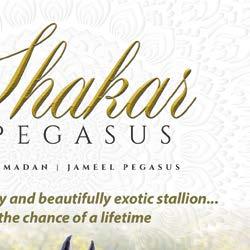
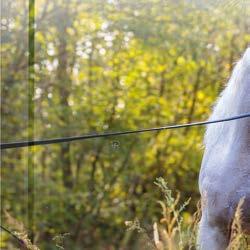









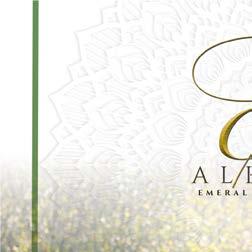


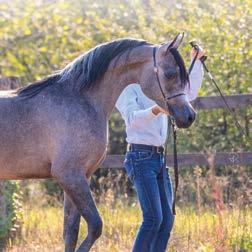


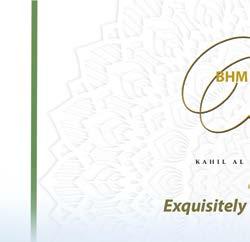

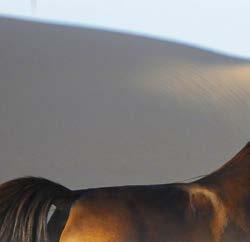

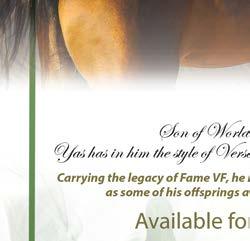
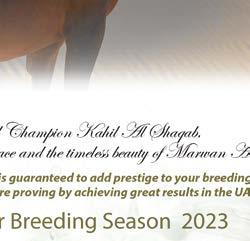







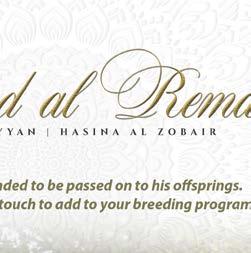




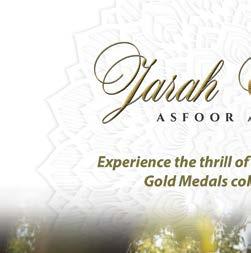



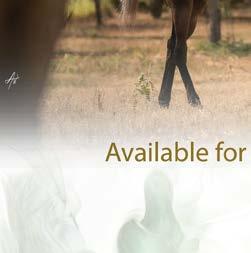


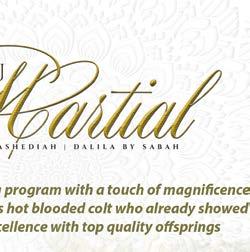






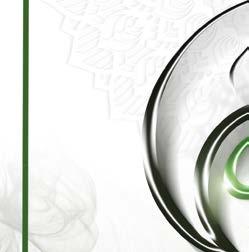


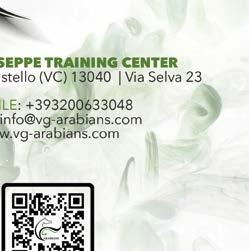
The first International Arabian Horse Championship, “B International Show” in the Sultanate of Oman, was held on January 20th and 21st, 2023, at Muscat Bay, a charming natural cove stretching at the foot of the Al Hajar Mountains. Conceived and organized by a charismatic and committed Omani female breeder, Mrs Al Sayydah Dhabia Bint Sami Al Busaidi, the owner of Al Dhabia Stud, the event was named after the Late Sultan Qaboos bin Said’s favourite horse, Alrubatiya, an Arabic word meaning ‘to bond or form a nexus’. The underlying principle is that Arabian horses connect people worldwide into a global community of big horse lovers. A value that Arabian Horse Magazine has embraced since its inception. Some of the finest Arabian horses competed in a country considered a hometown of some of the most beautiful horses in the world. The show took place right on the beach, with the backdrop of the turquoise waters of the Arabian Sea, exotic palm tre- es and some ancient remains. Since most officials and guests had arrived at night, they were overwhelmed by the spectacular view in the morning when the vibrant colours of the sea, the sun’s rays reflecting on the white sand of the arena, created an all-pervading spectacle of light. At the inauguration, local women in their lovely traditional costumes kindly welcomed the guests and showed them to their VIP seats. The judges of the 2023 Alrubatya International Arabian Horse Championship were some of the best-known international experts of the breed, including Mr Josy Everars (Belgium), Mr Elyas Faraj (Bahrain), Mr Christian Moschini (Italy), William Oppen (Argentina), and Sufian Taha (Palestine.
In a familiar and relaxed atmosphere, the show started on January 20, 2023, at 14:00 Asia/Dubai and ended on January 21, 2023, at 23:00 Asia/Dubai, with the very first champion horses of this first lovely edition:
In The Yearling Fil- lies Championship, Gold medal winner Shaikha Mudhar
(Marajj x Nahawand
Al Zobair) bred and owned by Sheikh Hamad Ali Al-Thani. Silver medal winner D Duweyyah (D Seraj x D Dalia) bred and owned by Dubai
Arabian Horse Stud. Bronze medal winner Rawabi Al Zobair (D
Seraj x Rouwaya Al Zobair) bred and owned by Sheikh Khalid Sultan Abdulla Mohammed Al-Thani.
In the Junior Fillies Championships, Gold medal winner Aj Sanem (Aj Azzam x Rk Sadeem) bred and owned by Ajman Stud - Hh Sheikh Ammar Bin Humaid Al
Nuaimi. Silver medal winner, D Tamia’a
(D Seraj x D Azalea) bred and owned by Dubai Arabian Horse Stud. Bronze medal winner Aj Tejan (Aj Kafu x Aj Tarim) bred and owned by Ajman Stud - HH Sheikh
Ammar Bin Humaid Al Nuaimi.
In the Senior Mares Championship, Gold medal winner Rk Sadeem (Magid Moniscione x Bv Especially Stivana) bred by Rashid Khalid Alanzan Shazin and owned by Ajman Stud - HH Sheikh Ammar Bin
Humaid Al Nuaimi. Silver medal winner
Aj Masari (Fa El Rasheem x Aj Marateb) bred and owned by Ajman Stud - HH
Sheikh Ammar Bin Humaid Al Nuaimi.
Bronze medal winner, D Jahraa (Excalibur E.A. x D Jawaher) bred and owned by Dubai Arabian Horse Stud.
In the Yearling Colts Championship, Gold medal winner D Faher (D Shakhat x D Fannanah) bred and owned by Dubai
Arabian Horse Stud. Silver medal winner
Shaalan Al Zobair (Raoud Al Bidayer x Nawader Al Zobair) bred and owned by Sheikh Abdulla Bin Mohammed Ali Althani. Bronze medal winner Jalmood Al Hawajer (Nashmi Al Hawajer x Durah
Al Hawajer) bred and owned by Ghanem
Mohamed Ghanem Mohamed Al Hajri.
In the Junior Colts Championship, Gold medal winner Tarantino C (El Tino x Scarlett C) bred by Coleal Farms and owned by Sheikh Abdulla Bin Mohammed
Ali Althani. Silver medal winner
Hama Mudhar Mp (Dominic
M x Baraka Mp) bred by Mindy Peters and owned by Sheikh Hamad Ali
A Al-Thani. Hama winner Aali Akmal (Fa El Rasheem x Hhc Ali-K) bred and owned by Akmal Stud - HRH Prince Abdulmajeed Bin Sultan Bin Abdulaziz Al Saud.
Mudhar Mp also won by move.
In the Senior Stallions Championship, Gold medal winner Shahwan Al Hawajer (Fa El Rasheem x Joharat Al Hawajer) bred and owned by Dr. Ghanem Mohamed Obaid Al Hawajer. Silver medal winner Shareem Rc (Fa El Rasheem x Eks Shakira) bred and owned by Royal Cavalry Of Oman. Bronze medal winner E.S. Rasheeq (Fa El Rasheem x Vitorio Secret To) bred by Sheikh Abdullah Bin Majid Al Qassimi and owned by Mohsen Hussein Hussein Emara.
Special Awards
At the Special Awards Ceremony, The Best Omani Handler title was earned by Mr Abdulla Al Abri, Mr Ahmed Al Harassi, and Mr Mohsen Al Ajmi. The Best Female title was awarded to Rk Sadeem (Magid Moniscione x BV Especially Stivana), bred by Rashed Khaled Alanzan (Shazin Stud) and owned by Ajman Stud - HH
Sheikh Ammar Bin Humaid Al Nuaimi. The Best Male title was grabbed by Shaalan Al Zobair (Raoud Al Bidayer x Nawader Al Zobair), bred and owned by Sheikh Abdulla Bin Mohammed Ali Althani. The Best Breeder title was awarded to Dubai Arabian Horse Stud. The Best Omani Owned Horse title was given to Farids Jahira Ema (Rfi Farid x Sf Qamars Jewelle), bred by Joann Marie Colao or Corin ne Colao, and owned by Sultan Mohammed Al Farsi.
…ALL ALONG THE SHOW
During the event, all the guests could experience the best of Omani hospitality including a variety of Art & Cultural Performances, a mini Souq, a wide selection of authentic Omani products in addition to live shows that everyone could enjoy while dining on a wonderful assortment of local and interna tional cuisines.
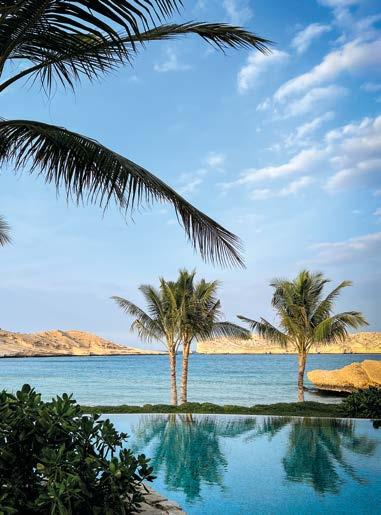
A Few Ending Comments
A very festive atmosphere surrounded the closing ceremony of the 2023 Alrubatya International Arabian Horse Championship. Throughout the show, everyone enjoyed themselves and applauded the stunning winners of this first edition. The final highlight was the presentation of flowers and giving a special cake to the idea person and prime mover behind this highly successful international show in Oman. Hopefully, more women will follow in the footsteps of Mrs Al Sayydah Dhabia Bint Sami Al Busaidi in supporting and promoting the breeder’s equestrian ecosystem in their respective countries, enhancing their visibility and acknowledgement. Next year’s edition promises to be another exciting chapter in the beautiful Sultanate of Oman!








